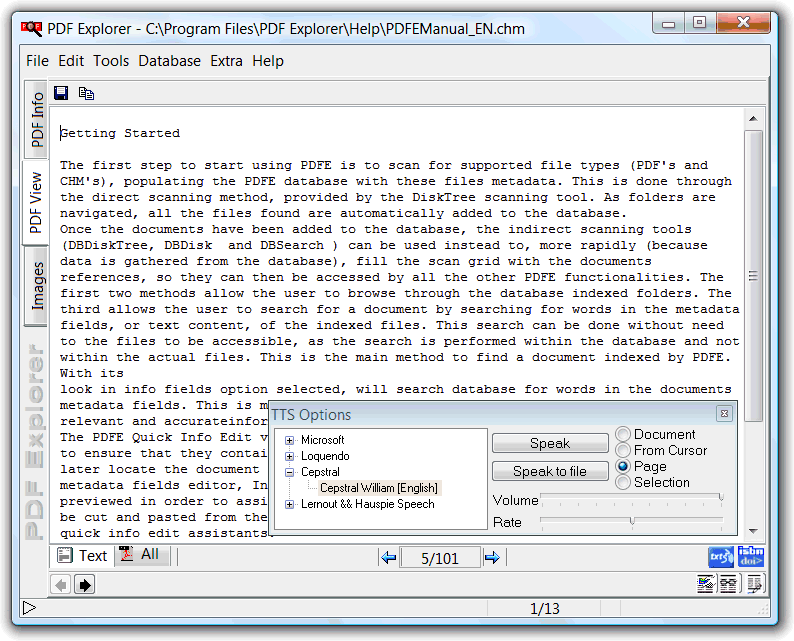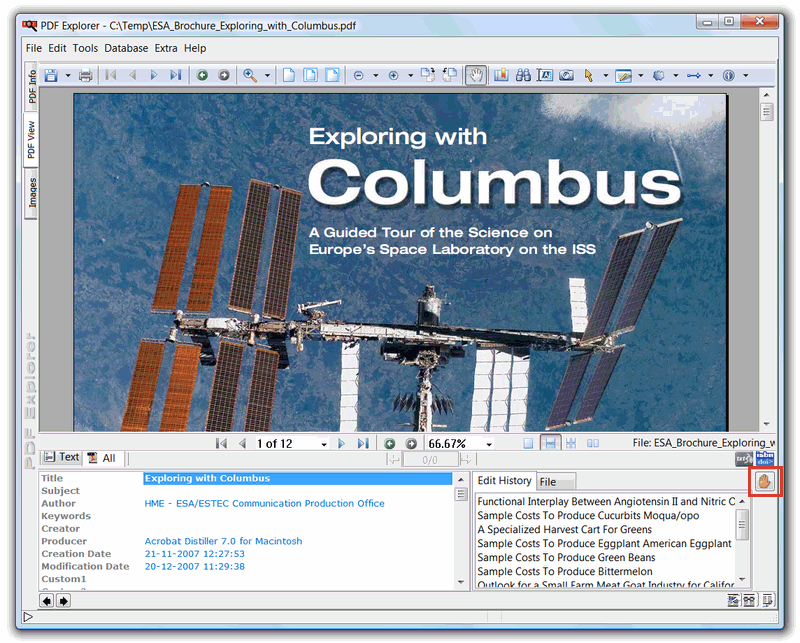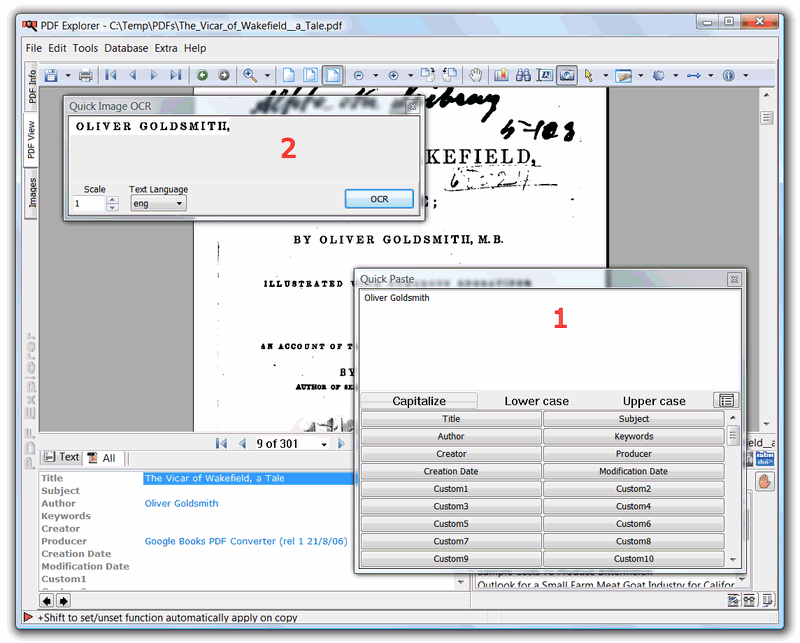When changing to this PDF View tab, the grid selected document will be automatically opened, either in Text only mode, using the internal text reader, or in All content mode through the configured internal reader, when viewing PDF's, or internal CHM's reader, if active document is a CHM.
In the next image we can see an example of the text only mode, and with the text to speech tool open.

The toolbars items at the bottom of the screen

have the following functions:
1- Change viewer to Text only mode.
2- Change viewer to All content mode.
3 - Open the text to speech tool. Active in Text only mode, uses Windows registered voices to read out loud the document text.
4- Opens the search for ISBN and DOI numbers tool. This tool scans all the document text, listing and resolving all the ISBN and DOI numbers found.
5- Open in the active viewer the grid previous document. (Ctrl+Up)
6- Open in the active viewer the grid next document. (Ctrl+Down)
7- Change view to the images view. (F5)
8- Open the active document in quick view mode. (F3)
9- Open the active document activating the quick info edit mode. (F4)
The mode quick info edit (also reachable from menu Tools>QuickInfoEdit or F4 keyboard key) allows the quick editing of the document metadata fields while viewing, at the same time, the file itself. In this way it is possible to copy and paste text, (with some PDF readers drag and drop is also one possibility), from the PDF document into the info fields.

While in this mode, the quick edit assistants, configurable using the above image red rectangle signalled button, are set active and will show up when the assigned action is fired.
The Quick Paste Assistant, 1 in next image, will appear when text is copied into the clipboard.

This assistant facilitate the task of redirecting the copied text into a info field, turning it into a simple button click. As the above image show, this assistant has a button for each of the active grid layout info fields. Clicking one of this buttons, will redirect the text in the edit assistant edit area, where copied text can also be edited, to the respective info field, replacing that field text. If while pressing these fields buttons the Ctrl key is down, will append the text to the field available text, and if the shift key is down will insert, at cursor position, the text into the field.
The Text only view mode is handy to help with this task, when PDF's don't allow text copying.
Another very useful assistant is the Quick Image OCR, 2 in above image, that will show up when an document snapshot is copied into the clipboard. This is normally done using the PDF reader snapshot tool.
This assistant is needed when the PDF document has been created from a scanned image, and has not passed a previous OCR (Optical Character Recognition) operation, so no text is available for copying. Using this assistant we have the possibility to copy the image area corresponding to the text we want to extract, OCR it, and send it to a info field, using the Quick Paste assistant, that will show up with the OCR'ed text. The OCR quality is directly related to the quality, and resolution, of the image being OCR'ed. Obviously, quality can't be controlled at this stage, as the image is already scanned, but it is important to take the snapshot with the PDF document zoomed in, increasing in this way the resolution of the copied image. Scaling the coped image, using the assistant scale function, also helps when the copied image doesn't have the required resolution. To further enhance recognition results, it is important to select the correct language of the text being recognized.